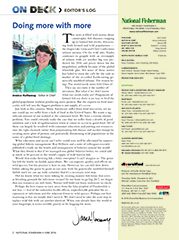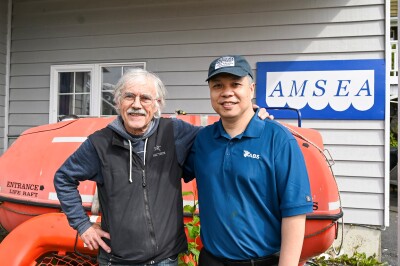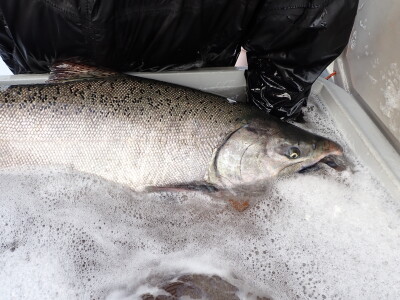Doing more with more
The news is filled with stories about catastrophic fish diseases cropping up in farmed fish stocks, threatening both farmed and wild populations — the tilapia lake virus and Chile’s infectious salmon anemia.
On the wild side, Alaska continues to grapple with an oversupply of salmon with yet another big run predicted for 2016 and prices down for the megafishery pollock because of the global whitefish glut. Yet none of these stories has failed to stunt the calls for the rush to market of the so-called Earth-saving genetically modified salmon. The reason being: The world needs more fish! Does it?
They say necessity is the mother of invention. But what if we don’t know what our needs really are? Proponents of farmed fish say there is no way to feed the global population without producing more protein. But the experts on food insecurity will tell you the biggest problem is not supply, it’s access.
Just look at this country. Many Americans suffer from food insecurity, yet no one could say we suffer from a lack of food in the United States. We waste a significant amount of our seafood at the consumer level. We have a serious obesity problem. You could certainly make the case that we suffer from a dearth of good nutrition and a lack of egalitarianism when it comes to access to good food. All of these can largely be resolved with consumer education and putting our resources into the right channels rather than perpetuating fish disease and market slumps by creating more gluts of protein and potentially threatening wild populations in the name of a global food shortage.
What education and access can’t solve could very well be alleviated by improving global fishery management. Ray Hilborn and a suite of colleagues recently published a study on the health and management of fisheries around the world. What they found is that if we managed our global fisheries better, we could add as much as 50 percent to the world’s supply of wild harvest fish.
Would that make farming fish a futile enterprise? I can’t imagine so. The genie has left the bottle on finfish aquaculture. We can improve quality and effects on wild species, but the practice is here to stay. However, we can still slow down before asking the genie to grant us our next wish for genetically modified farmed finfish until we can say with certainty that it’s a necessary next step.
Did we know what we were risking by creating massive fish farms that serve as breeding grounds for infectious viruses? In our haste to go big 24-7, we forget that our resources are still finite. Nature will hold our hasty endeavors in check.
Perhaps the best reason to turn away from the false prophet of Frankenfish is not fear — fear of the unknown health effects, unpredictable potential for escapement or infections and the inherent threat to wild species. Perhaps our best reasoning is that we simply don’t need it. We don’t need to take the next step to replace wild fish with yet another shortcut. When you already have the world at your fingertips, it seems terribly greedy to be begging for more.








